This schematic cut-away view of the components of Jupiter's ring system shows the geometry of the rings in relation to Jupiter and to the small inner satellites, which are the source of the dust which forms the rings.
Click on image for full size
Image courtesy of NASA/JPL.
Galileo Discovers Origin of Jupiter's Rings
News story originally written on September 21, 1998
Scientists recently discovered the origin of Jupiter's rings. With the help of the Galileo spacecraft, scientists figured out that the rings are made from
dust that was kicked off of the small moons surrounding Jupiter when
these moons were struck by comets or asteroids.
The ring system begins about 55,000 miles (92,000 kilometers) from Jupiter's center and extends to about 150,000 miles (250,000 kilometers) from the planet. Jupiter's rings are made up of a main ring and an inner, cloud-like ring, called the halo. Galileo also revealed that there is an outer ring system called the gossamer rings. They are almost-tranparent rings. (see picture to the left!)
When speaking about this new discovery, astronomer Joseph Burns said, "These images provide one of the most significant discoveries of the entire Galileo imaging experiment."
Galileo has been orbiting Jupiter and its moons for 2 1/2 years, and is now in the middle of a two-year extension, known as the Galileo Europa Mission.
You might also be interested in:
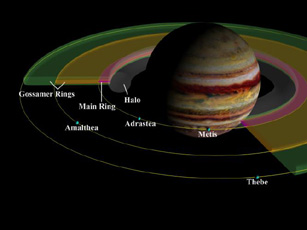
Jupiter has a series of rings circling it! Unlike Saturn's rings, which are clearly visible from Earth even through small telescopes, Jupiter's rings are very difficult to see. So difficult, in fact, that
...more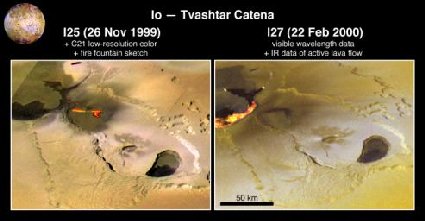
The Galileo spacecraft was launched in October 1989. So, Galileo has been in space more than 10 years and it has been orbiting Jupiter for more than five years. Galileo is still going strong! "We're proud
...more
Adrastea is a small moon of Jupiter. Of Jupiter's 60 moons, it is the second closest to the planet. Adrastea was discovered by David Jewitt and Ed Danielson of the Voyager team in 1979. Adrastea is tiny
...more
It was another exciting and frustrating year for the space science program. It seemed that every step forward led to one backwards. Either way, NASA led the way to a great century of discovery. Unfortunately,
...more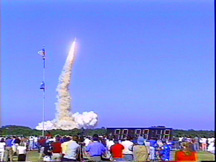
The Space Shuttle Discovery lifted off from Kennedy Space Center on October 29th at 2:19 p.m. EST. The weather was great as Discovery took 8 1/2 minutes to reach orbit. This was the United States' 123rd
...more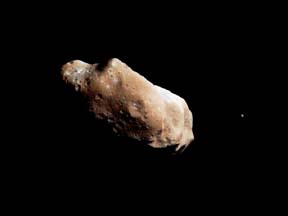
A moon was discovered orbiting the asteroid, Eugenia. This is only the second time in history that a satellite has been seen circling an asteroid. A special mirror allowed scientists to find the moon
...more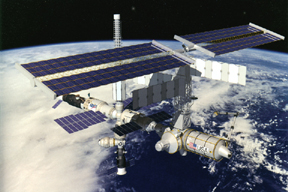
Will Russia ever put the service module for the International Space Station in space? NASA officials want an answer from the Russian government. The necessary service module is currently waiting to be
...more













